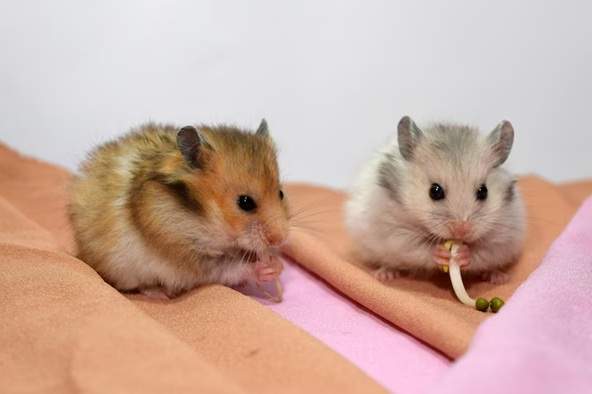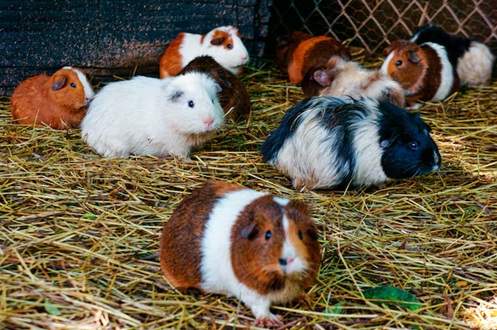Well, we know that can be really unsettling. But,if you have long been a hamster parent, you perhaps are well aware of it. You might have seen or heard about hamsters eating their babies. Yes, that is the harsh reality of the natural world. Even when hamsters are quite cuddly, they have some primal characteristics that make them not so comfortable.
But why do hamsters eat their babies? What is the exact reason behind this hamster cannibalism, as it is widely known as?
The act of eating its own babies by hamsters is called infanticide. It is a natural, tragic, yet unsettling rodent behavior rooted in survival instincts. The primary reasons for the behaviour include stress, anxiety, confusion about the scent, food scarcity or nutrient requirements, and fear of safety.
Why do Hamsters Eat Their Babies?
Well, to begin with, there is no emotional connection in hamsters to the extent human mothers have. However, having said that, there are several reasons that make a hamster eat its babies.

| Category | Specific Cause | How it Impacts Mother Hamster |
| Stress | Environmental Disturbances | Leads to feelings of insecurity, overwhelming burden. |
| Frequent Handling | Disruption of nest, foreign scent on pups. | |
| First-Time Mothers | Lack of experience, high anxiety. | |
| Large Litter Size | Perceived inability to care for all, resource strain. | |
| Threat/Safety | Presence of Other Pets | Instinctive fear of predators. |
| Inadequate Habitat | Feeling exposed, lack of secure nesting. | |
| Male Hamster Presence | Threat to pups, competition, risk of re-pregnancy. | |
| Nutritional | Insufficient Diet | Lacks energy/protein for milk production, self-preservation. |
| Lack of Water | Dehydration, desperate attempt for fluid/nutrients. | |
| Scent Confusion | Human Scent on Pups | Mother rejects “foreign” or unrecognized pup. |
| Other Foreign Scents | Disrupts natural litter scent. |
An overwhelming stress and anxiety
Experts in animal psychology are of the opinion that stress and anxiety are the prime reasons that make mother hamsters eat their babies. Delivering and raising pups can be very taxing. When a mother hamster feels overwhelmed or unsafe, her primal instincts may kick in, leading her to cull her babies. It is her way of saving the babies from danger. A discussion of Reddit states that hamsters need a lot space and when they realize that the space is too inadequate, they get stressed out and eat their pups.

Some reasons that can cause the tendency to be stressed out include
- Environmental Disturbances: A noisy environment, frequent loud sounds, sudden movements near the cage, or constant peering into the nesting area can cause immense stress. Hamsters are prey animals, and any perceived threat can trigger a fight-or-flight response. For a new mother, this often translates into eliminating what she perceives as a vulnerable burden that might attract predators or compromise her own safety.
- Frequent Handling and Disturbance: The temptation to check on the newborns is strong, but human scent on the babies or disrupting the nest can be catastrophic. The mother might not recognize her pups due to the foreign scent or feel that their “hiding spot” has been compromised, making them a liability. This is a critical point in newborn care.
- First-Time Mothers: Young or inexperienced mothers may not have developed strong maternal instincts. The shock and demands of their first litter can lead to extreme stress, causing them to abandon or consume their young out of confusion or a feeling of inadequacy.
- Large Litter Size: A particularly large litter can be incredibly draining for a mother hamster. If she perceives that she cannot adequately care for all of them, or that the sheer number of babies will deplete her resources, she may sacrifice some to ensure the survival of the fittest.
Food scarcity and lack of nutrients
Pregnancy and delivery can drain off the energy for the mother hamster. She needs a lot of food and water to produce milk or even to sustain herself. It is assumed that even cats eat their babies soon after giving birth. Of course, it isn’t as widespread or common as in the case of hamsters.
- Insufficient Diet: If the mother is not provided with an adequate amount of high-quality food, especially protein, her body will struggle to cope. She may resort to consuming her babies to regain essential nutrients and energy, prioritizing her own survival so she can potentially reproduce again later under better conditions. This is a crucial aspect of their biological needs.
- Lack of Water: Dehydration can be even more critical than lack of food. A nursing mother needs constant access to fresh water. If water sources are insufficient or become unavailable, she may cannibalize her litter out of desperation.
Scent confusion and rejection
Hamsters rely heavily on their sense of smell. A mother identifies her pups by their unique scent, which becomes intertwined with her own through constant grooming. That is exactly why it is recommended not handle the hamster babies too frequently.
- Human Scent Contamination: If you touch the newborns directly, especially with bare hands, you transfer your scent onto them. The mother may then perceive the baby as a foreign object, an “intruder,” or something that doesn’t belong in her nest, leading her to reject or even consume it. This is a common pitfall in hamster husbandry.
- Other Foreign Scents: Similarly, scents from other pets, strong perfumes, or even cleaning products on bedding can confuse the mother and disrupt the natural scent of her litter.
Learn whether hamsters can be a good pet.
How to Prevent Hamster Infanticide: Best Practices for Hamster Care
Having understood the exact reasons why hamsters eat their babies, it should be easy to prevent this unsettling hamster cannibalism.
Provide a calm and reassuring environment
Some tips that may be helpful include
- Keep the hamster cage in a quiet room. Make sure that it is away fro loud noise or even other pets.
- You may also cover the cage with a blanket. Make sure to provide enough ventilation. This can help avoid the stressors associated with visual signals.
- Avoid handling the babies, or making loud noises near the cage.
Provide enough water and food
Food scarcity has been one of the major reasons for a hamster mother eating her babies.
- Provide enough food for the mother hamster. Make sure the food is rich in proteins. A few good examples are hard-boiled egg whites, plain cooked chicken, or high-quality commercial protein
- Keep a constant supply of fresh water. Take care to change it at regular frequency.
A mother hamster’s diet is paramount for her health and the survival of her litter. Ensure a significant increase in high-quality protein (e.g., plain cooked chicken, hard-boiled egg whites, commercial protein supplements) and constant access to fresh, clean water before, during, and after pregnancy. Seeds, fruit, vegetables, and pellets can be a good option to keep your mother hamster healthy. Adequate nutrition directly impacts her ability to nurse and reduces the stress of resource scarcity, which can otherwise trigger tragic cannibalistic behavior.
Minimise disturbance and too much handling
Do NOT touch the newborn hamsters for at least 14 days after birth. Your scent can cause the mother to reject them. You may need to place this rule if you have kids at your home. They may be overenthusiastic and thus inadvertently cause the mother hamster to reject the babies.
- Do not clean the cage during this time period.
- If you have to check the babies and mother, do it visually and from a distance. Even that should be as much infrequent as possible.
The table below should give you a better idea in this context –
| Stage | Approximate Duration | Key Actions / Considerations for Prevention |
| Gestation Period | 16-22 days (Syrian) / 18-21 (Dwarf) | Ensure mother has excellent nutrition, quiet environment. Remove male after mating. |
| Post-Birth (Days 1-14) | First 2 Weeks | CRITICAL NO-TOUCH PERIOD. Provide ample food & water, absolute minimal disturbance. |
| Pups Opening Eyes | ~14 days | Still avoid handling if possible. Can start preparing for weaning. |
| Weaning Period | 21-28 days | Pups can be handled gently. Prepare for separation by gender. |
| Separation by Gender | ~28-35 days | Separate pups to prevent unwanted pregnancies/fighting. |
Look for the signs of stress
Stress, as we have already found out, is the primary reason for a mother hamster eating her babies. Check out for any visible sign of stress and make sure to minimise them.
- Check out the stress signals such as excessive bar chewing, frantic pacing, or hiding more than usual.
- Prioritise the health and wellbeing of the mother. A healthy mother will not be much stressed out.
Stay Committed to Responsible Pet Ownership
At Dreamy Mammals, we believe in providing accurate, helpful, and trustworthy information to our community of animal lovers. Our aim is to foster responsible pet ownership by empowering you with in-depth knowledge and practical tips.
By implementing the advice provided here, you are not only taking significant steps to prevent infanticide but also contributing to a healthier, happier life for your hamster. Remember, understanding their natural behaviors and providing a secure, nurturing environment are the cornerstones of successful hamster breeding and hamster care.
If you have concerns about your hamster’s behavior or health, always consult with a qualified veterinarian specializing in exotic animals. Your dedication makes all the difference for these wonderful small mammals.




Add Comment